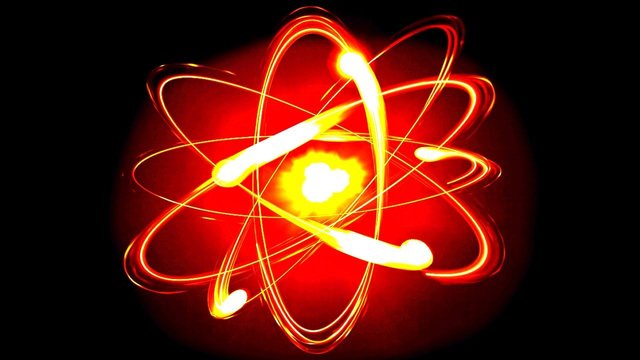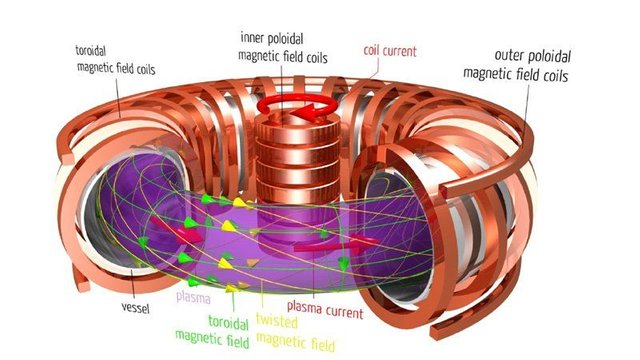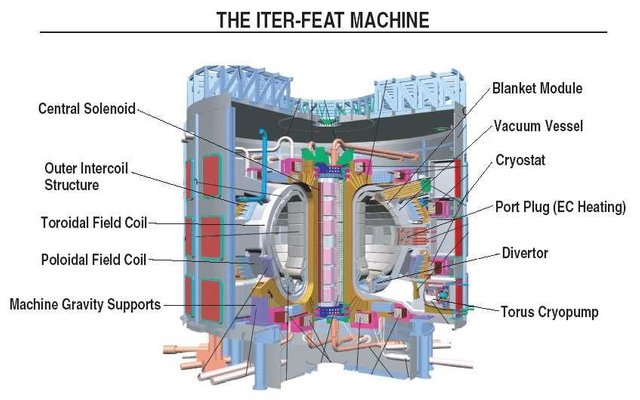A 30 minutes record for a fusion reactor in 2021- Billions of dollars being spent!
Nuclear fusion is technology that sounds too good to be true: it is sustainable and is unlimited.
Nuclear fusion is a reaction in which two or more atomic nuclei come close enough to form one or more different atomic nuclei and subatomic particles (neutrons and/or protons). The difference in mass between the products and reactants is manifested as the release of large amounts of energy. This difference in mass arises due to the difference in atomic "binding energy" between the atomic nuclei before and after the reaction. Fusion is the process that powers active or "main sequence" stars, or other high magnitude stars.
However, scientists are approaching, step by step, to the realization of this technology. Fusion power offers vast amounts of clean energy with a near limitless fuel source and virtually zero carbon emissions, but only if it works.
There are teams of researchers around the world and billions of dollars being spent on making sure it does. In February last year, a new chapter of fusion energy research commenced with the formal opening of Wendelstein 7-X. This is an experimental €1 billion fusion reactor built in Greifswald, Germany, to test a reactor design called a stellarator.
It will be able to operate for up to 30 minutes duration, which would be a record for a fusion reactor. This is planned to be by around 2021, and it's an important step en-route to demonstrating an essential feature of a future fusion power plant (continuous operation).
The black horse of nuclear reactors
Known in the plasma physics community as the black horse of reactors that use nuclear fusion, stellarators are notoriously difficult to build. The GIF below shows the many different layers of W7-X, which took 19 years to complete:
In southern France, is being built another experimental $US20 billion fusion reactor (ITER) that uses a different design called a tokamak. However, the two projects complement each other, and innovations in one are likely to translate to an eventual working nuclear fusion power plant.
The energy from nuclear fusion is based on the same reaction as that of the Sun, when merging atoms such as helium and hydrogen. The atom resulting from the merger is easier, and the difference in mass is converted into energy.
This is a diagram of the reactor that is planned for the ITER fusion plant in france. The Vacuum vessel is the part that holds the plasma. The ion cyclotron system is what adds more particles from a particle accelerator to keep the plasma heated. The torodial (magnetic)field coils are the super conducting magnets that keep the plasma in its circular shapes as well put pressure on it which pushes the atoms closer together. The central soleniod is what supplies the electricity to the torodial field coils. The cryostats are what cools the magnets. The Blanket Modules absorb heat and neutrons from the fusion reactions taking place inside. They are made of lithium. Diverter are what get rid of the helium products. They act like an exhaust pipe.
The difficulty comes in encouraging the two atoms to fuse, because it requires a temperature of millions of degrees. Material is converted to plasma is held by a magnetic field (because no protective material does not withstand such a temperature). But it is difficult to maintain this magnetic field on a material so unstable.
Stellarators and tokamaks are both types of toroidal magnetic confinement devices that are being investigated for fusion power. In these experiments a strong toroidal magnetic field creates a magnetic bottle to confine the plasma.
Matthew Hole, researcher of Plasma Research Laboratory at the Australian National University, said that the two models W7-X and ITER are complementary, but the technology that underpins them is identical: both use external heating system and also use a steam turbine that generates electricity discharges energy from fusion products.
However, the large current can drive 'kink' instabilities, which can cause the plasma to become disrupted and if the plasma is disrupted, then the reactor needs to be flooded with gas to quench the plasma. Flooding it with gas will prevent it from damaging the experiment.
In a power plant, heavy isotopes of hydrogen fuse to form helium along with an energetic neutron. While the helium is contained within the plasma, the neutron is has a neutral electric charge, and shoots off into the 'blanket' surrounding the plasma. This heats it up, which in turn drives a steam turbine that generates electricity.
It is however too early to say which model will be most profitable, but the competition, and even cooperation between the two systems will be beneficial to see exactly what works and what does not work, thus contributing to a deal crucial to new towards new discoveries and experiments. Now, with the advent of highly promising reactor W7-X of Germany, can develop new series of research and also increase the diversity of ideas on the process of nuclear fusion reactors and build more effective.



Thank you very much @hilarski! Glad to see you promoted my post! Cheers.
When I started my studies in 1999, I was told that fusion reactors will be there within the next fifty years. This is still what is told today... I am crossing fingers... but I am sceptical. I want to see some results now. ^^
Yes, you are right. They spent a lot of money and not so many results. To be honest, I really like the idea, but that doesn't mean I believe what they say. I hope they will show us more results!